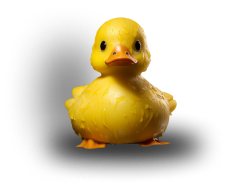
CTF (Capture the Flag) is a computer security competition where participants solve information security challenges to score points. Tasks cover various aspects such as cryptography, web security, reverse engineering. CTFs not only teach technical skills in an engaging way, but also develop teamwork, problem solving and time management. CTFs are growing in popularity as they offer not only training but also the opportunity to earn through prize money and a platform for networking among like-minded people.
It’s about helping advocates sell their skills by posting their content publicly.
Test your OSINT and cyber investigative skills in real-world scenarios in our OSINT courses.
The OSINT-oriented CTF has 40 tasks in 3 streams: General Knowledge, Life on the Internet, and Investigating Evidence.
Fully customized just for CTF, the web application ensures smoothness, simplicity and fun for the all players.
This room will take you through a typical OSINT investigation where you will be asked to help catch a cybercriminal.
The best way to learn is to do. Our content is based on interactive exercises based on real-life scenarios, from hacking machines to investigating attacks..
A fun and addictive game that makes you want to learn. It’s easy to navigate but hard to master, making it a game you’ll never tire of.
Technically, it’s a test case generator to test the robustness of how well a program can tolerate potentially malicious input.
Most important step in the penetration testing process. There is a wealth of publicly available information from which to select information.
Just started this OSINT quiz and thought I’d share. Email [email protected] with the SUBJECT “start” and you will receive instructions.
Think of an answer using only what is in the picture and leave your answer in the comments. If your answer is correct, you place the next round!
Our goal is to provide those new to OSINT with a series of free resources and simple exercises that complement each other to provide a simple road map for learning the field and honing relevant skills.
OSINT Games CTF is a Capture The Flag (CTF) learning experience for people of all experience levels who want to challenge themselves and learn more about open source research (OSINT).
In this repository you will find a password-protected archive of various OSINT tasks and geolocation quizzes. Follow the white rabbit using your OSINT skills, try to find all the answers.
Trace Labs is designed to be a catalyst for improving the situation of missing persons and reuniting powerful relationships families.
If you have an object but don’t know what it is, this is the place to look for the answer. We may not know the “why”, but we can help with the “what”.
OSINT CTF to gather information about a missing person who carried out a cyber attack on the organization he worked for.
Sourcing.Games! This tricky rabbit hole will force you to learn innovative sourcing techniques… Sourcing.Game won’t know what you don’t know.
MuirlandOracle has created a fantastic room to explore attitudes towards how to do research in general, particularly in the context of cyber security.
In this room we will study the IMINT/GEOINT discipline, which is short for Image Intelligence and Geospatial Intelligence.







